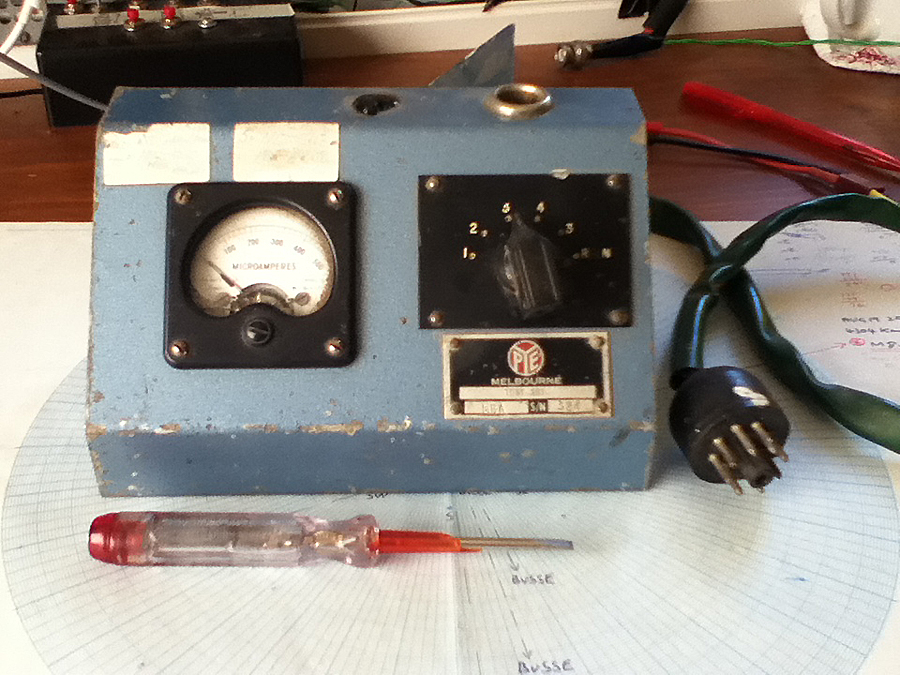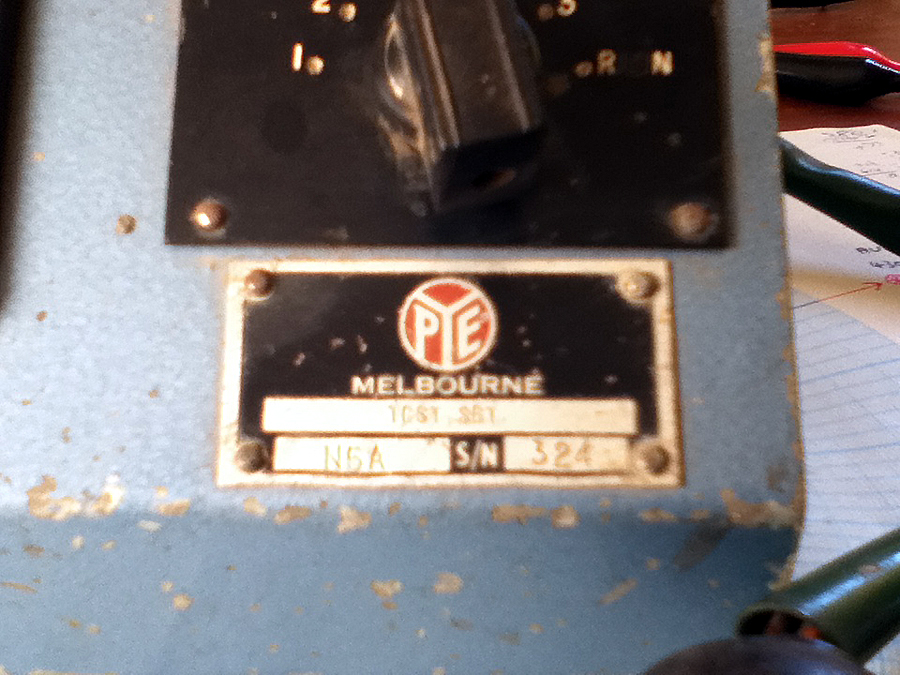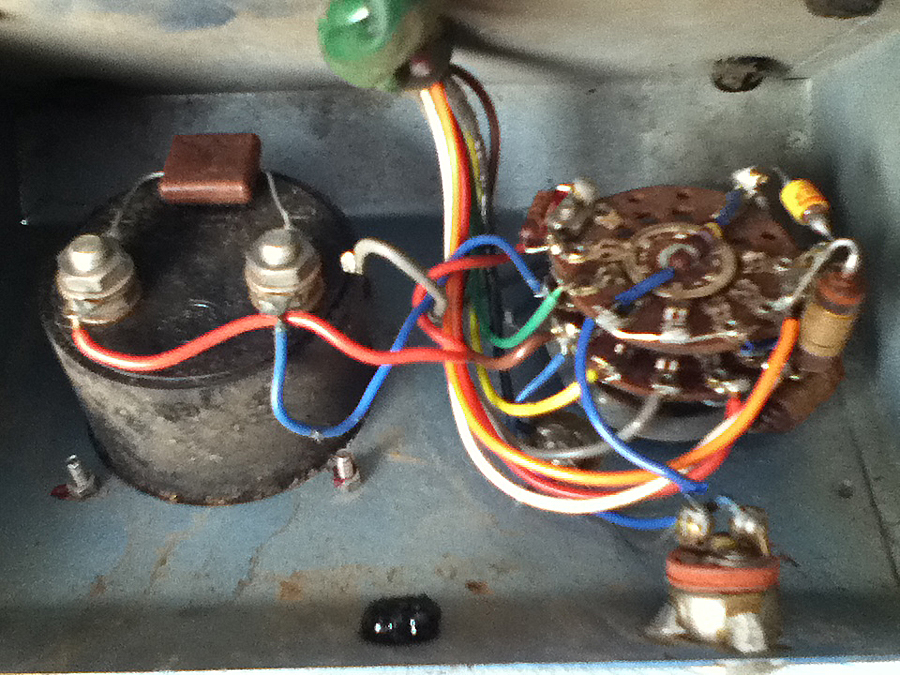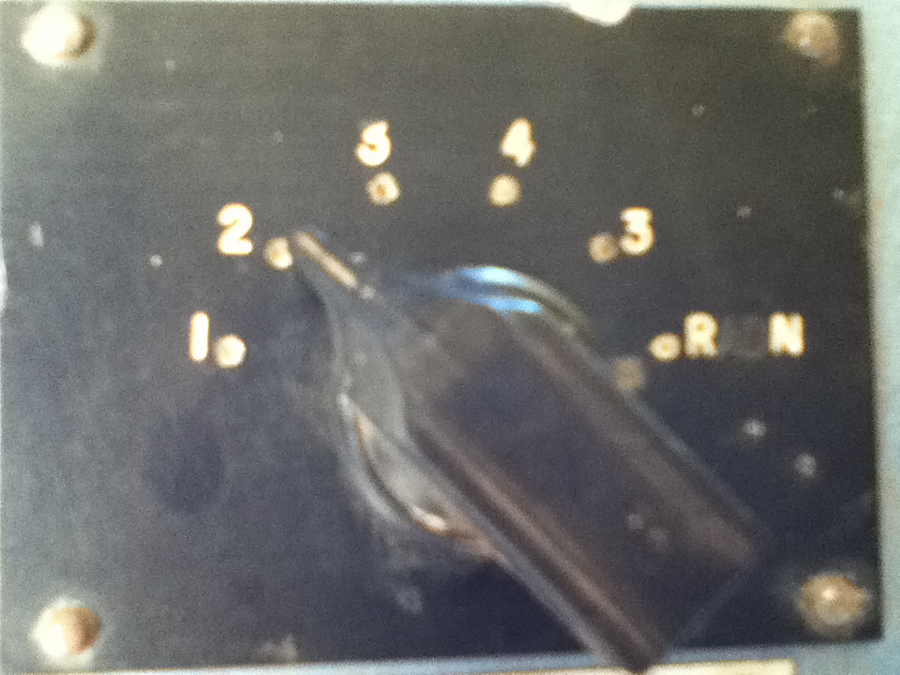General Discussion
Forum home - Go back to General discussion
|
While talking of PYE-----
|
|
|
« Back ·
1 ·
Next »
|
|
|
Return to top of page · Post #: 1 · Written at 7:45:14 PM on 17 February 2020.
|
|
|
|
Location: Linton, VIC
Member since 30 December 2016 Member #: 2028 Postcount: 472 |
|
This is probably a good time to display what seems to be some sort of test gear from PYE.     |
|
|
Return to top of page · Post #: 2 · Written at 9:17:59 PM on 17 February 2020.
|
|
|
|
Administrator
Location: Naremburn, NSW
Member since 15 November 2005 Member #: 1 Postcount: 7548 |
|
Photos uploaded. ‾‾‾‾‾‾‾‾‾‾‾‾‾‾‾‾‾‾‾‾‾‾‾‾‾‾‾‾‾‾‾‾‾‾‾‾‾‾‾‾‾‾‾‾‾‾‾‾‾‾‾‾‾‾‾‾‾‾‾‾‾‾‾‾‾‾‾‾ A valve a day keeps the transistor away... |
|
|
Return to top of page · Post #: 3 · Written at 10:50:21 PM on 17 February 2020.
|
|
|
|
Location: Wangaratta, VIC
Member since 21 February 2009 Member #: 438 Postcount: 5590 |
|
The cap across the meter was normally to bypass RF. |
|
|
Return to top of page · Post #: 4 · Written at 8:44:09 AM on 18 February 2020.
|
|
|
|
Location: Linton, VIC
Member since 30 December 2016 Member #: 2028 Postcount: 472 |
|
Yes, makes sense. I wondered how signal output from the diode was smoothed. |
|
|
Return to top of page · Post #: 5 · Written at 11:08:04 AM on 18 February 2020.
|
|
|
|
Location: Wangaratta, VIC
Member since 21 February 2009 Member #: 438 Postcount: 5590 |
|
There is such a thing as too close & the tripod is not dead: Auto focus is not always your friend. |
|
|
Return to top of page · Post #: 6 · Written at 2:57:15 PM on 18 February 2020.
|
|
|
|
Location: Belrose, NSW
Member since 31 December 2015 Member #: 1844 Postcount: 2621 |
|
It's a test set for transceiver alignment. Pye's 2 way radio production was in Melbourne. |
|
|
Return to top of page · Post #: 7 · Written at 6:56:04 PM on 18 February 2020.
|
|
|
|
Location: Linton, VIC
Member since 30 December 2016 Member #: 2028 Postcount: 472 |
|
Fantastic! Thank you! |
|
|
Return to top of page · Post #: 8 · Written at 11:16:20 PM on 18 February 2020.
|
|
|
|
Administrator
Location: Naremburn, NSW
Member since 15 November 2005 Member #: 1 Postcount: 7548 |
|
I sharpened some of the photos. The big trick with stills like this is light and plenty of it. I usually suggest moving the camera away from the subject and zooming in to achieve the best subject:background ratio if the camera won't focus correctly. The photo of the AWA 'fridge' on the front page of the site was taken at a distance of about 3 metres. ‾‾‾‾‾‾‾‾‾‾‾‾‾‾‾‾‾‾‾‾‾‾‾‾‾‾‾‾‾‾‾‾‾‾‾‾‾‾‾‾‾‾‾‾‾‾‾‾‾‾‾‾‾‾‾‾‾‾‾‾‾‾‾‾‾‾‾‾ A valve a day keeps the transistor away... |
|
|
Return to top of page · Post #: 9 · Written at 6:25:31 PM on 19 February 2020.
|
|
|
|
Location: Belrose, NSW
Member since 31 December 2015 Member #: 1844 Postcount: 2621 |
|
If using a phone, a trick my grandkids showed me is to touch the little yellow square and drag it to the point where you want best focus. |
|
|
« Back ·
1 ·
Next »
|
|
|
You need to be a member to post comments on this forum.
|
|

Sign In

Vintage Radio and Television is proudly brought to you by an era where things were built with pride and made to last.
DISCLAIMER: Valve radios and televisions contain voltages that can deliver lethal shocks. You should not attempt to work on a valve radio or other electrical appliances unless you know exactly what you are doing and have gained some experience with electronics and working around high voltages. The owner, administrators and staff of Vintage Radio & Television will accept no liability for any damage, injury or loss of life that comes as a result of your use or mis-use of information on this website. Please read our Safety Warning before using this website.
WARNING: Under no circumstances should you ever apply power to a vintage radio, television or other electrical appliance you have acquired without first having it checked and serviced by an experienced person. Also, at no time should any appliance be connected to an electricity supply if the power cord is damaged. If in doubt, do not apply power.
Shintara - Keepin' It Real · VileSilencer - Maintain The Rage
